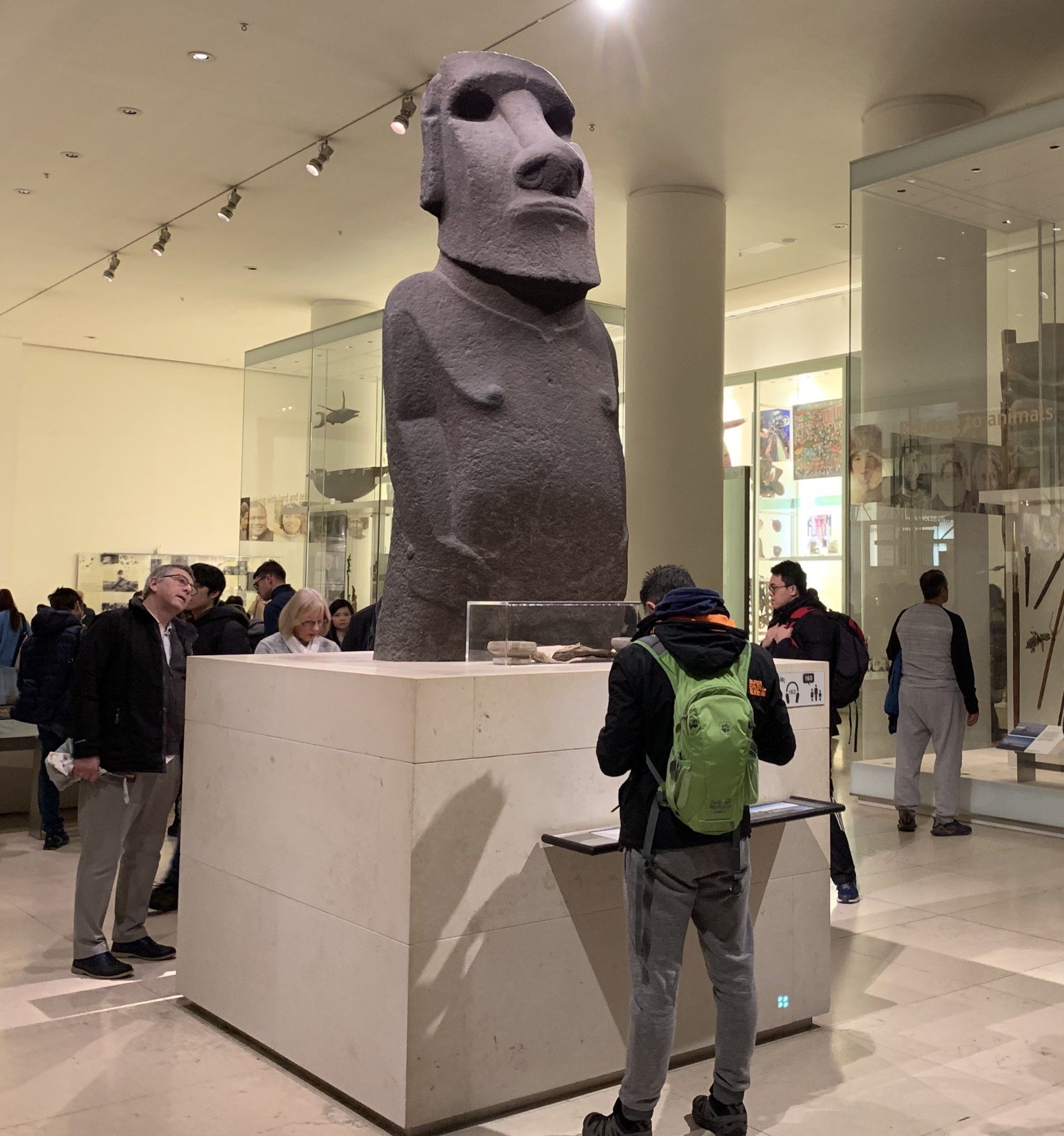Cultural Restitution
SHARE ARTICLE
Last month, a delegation from Easter Island met with officials at the British Museum to ask for the return of a monumental head and torso statue, known as a moai. One month later, the mayor of Easter Island suggested maybe the British Museum should retain it after all.
The Hoa Hakananai’a, meaning lost or stolen friend, is one of around 900 moai that once stood proud around this tiny island in the Pacific Ocean, home to a distinctive artistic and architectural culture. These stylised, expressive monolithic figures, made about 1000-1200AD, were positioned with their backs to the sea, representing the resilience and determination of the Islanders. No written or oral history survives to tell the story of these sculptures, but it seems from about the 1600s, when the first European visitors started arriving, they were deliberately toppled by the people of Rapa Nui (Easter Island) themselves, perhaps as a way of turning their backs on their ancestors.
Today, they are still revered by some Rapa Nui people as the spiritual embodiment of tribal leaders, chiefs or deified ancestors.
One of the Museum's most iconic exhibits, the 2.5m high Hoa Hakananai’a is one of two monumental statues removed from Rapa Nui by the British in the 19th century and now in The British Museum (a third is in the Musée du quai Branly in Paris). However, it is considered one of the most important. Carved from hard basalt, it's in better condition than most other moai, which were carved from softer volcanic stone and still survive scattered around the Island. It was removed – without the permission of the Rapa Nui - in 1868 by Richard Powell, captain of the British survey ship HMS Topaze, and presented as a gift to Queen Victoria. The Queen presented it to the Museum in 1869.
At the same time, the Admiralty gifted the smaller statue also removed by Powell, Moai Hava, directly to the British Museum.
Last month, the Museum received a delegation from the island's Council of Elders, led by the Island's governor and accompanied by Chile's national assets minister, who requested the return of both statues on the grounds they were removed illegally. There are some on Rapa Nui who contemplate their return as part of a wider struggle to strengthen their cultural identity.
However, this week the Rapa Nui mayor, Pedro Edmunds Paoa, suggested the British Museum might be in a better position to preserve the statues than returning them to the Island. Most of the other moai, toppled but still in situ, have been badly damaged by wind, rain and erosion. Although Rapa Nui has responsibility for their conservation, he believes there is much they can learn by collaborating with experts at the British Museum.
In exchange for keeping the statues, Mr Paoa hopes the Museum will agree to provide financial assistance with the conservation and, ultimately, support for a new museum to display these and other moai, together with other artefacts on Rapa Nui. If not, he says he's prepared to join the governor's action to have the statues returned.
However, in the interim, a demand for recognition of Rapa Nui's ownership remains a sticking-point. The Museum's labelling omits any mention of the forced nature of its removal, focussing instead on its history since collection. British Museum staff travelled to Rapa Nui in 2019 to hold further talks, but we understand on the basis of a potential loan, not for its repatriation or a change in it's ownership. A dialogue with Rapa Nui's community is understood to be continuing.
Photo of monumental head from Rapa Nui (detail)
Courtesy of Christian K. from Pixabay
More News




